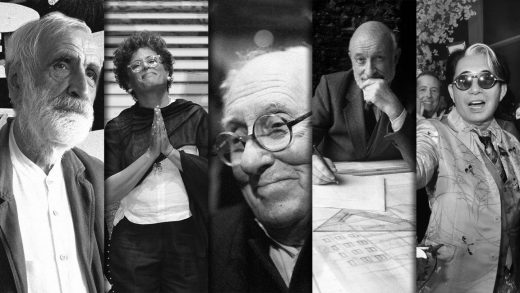Remembering the designers, architects, and creative thinkers who died of COVID-19
The coronavirus pandemic has taken nearly 2 million lives around the world. Like every other industry, the design world has suffered some incalculable losses. Here, we remember just a few of the designers and creatives who have passed away this year due to COVID-19 complications.
Enzo Mari
Over his six-decade career, the renowned Italian industrial designer created modern, everyday objects that were beautifully simple, elegant, and effective. He made overlooked items such as trash cans and calendars into iconic pieces. Mari’s fierce ideological commitment to Communist principles was a throughline across all of his work. “His greatest contribution to design culture is the zest with which he pursued his political concerns in his work: from anti-consumerism and workers’ rights to environmentalism,” design critic Alice Rawsthorn told Fast Company in October.
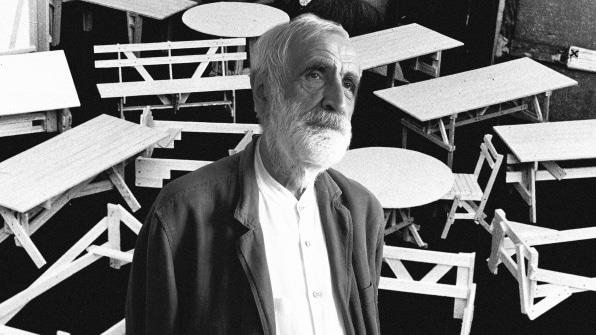
Mari, who was 88, passed away on October 19. Lea Vergine, Mari’s wife and an art critic, passed away of COVID-19 complications a day later.
Mohamed Melehi
Though the Moroccan-born artist spent time studying in Spain, Italy, and the United States, he left the Western viewpoint behind when he returned to his home country. Instead, he created a new kind of modernism that drew from his lived experience in Morocco and from Islam, not Eurocentrism. Upon joining the Casablanca Art School faculty in 1964, Melehi encouraged his students to study Berber crafts and architecture and to find modernism in the world immediately around them.
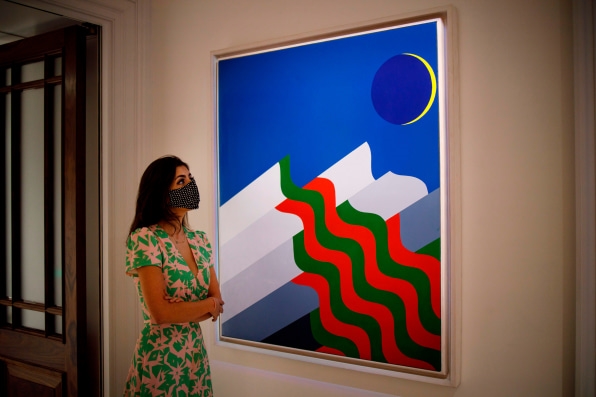
[Photo: Tolga Akmen/AFP/Getty Images]
For his part, Melehi applied the defined lines and geometric shapes of modernism in new ways, adding vibrant pinks, teals, oranges, and yellows that oscillate in waves across the canvas. Melehi hosted open-air exhibitions, and as protests grew in post-colonial Morocco, Melehi shifted to atypical painting materials more closely associated with the working class, such as car paint and wood instead of canvas.
In the 1980s and ’90s, he took a position as arts director at the culture ministry and then cultural consultant to the ministry of foreign affairs, and he has had solo exhibitions worldwide. He passed on October 28 due to COVID-19 complications at the age of 83.
Michael Sorkin
The architect and urban planner was a big believer that architecture and urban design could be used to further social justice. “The answer to the crisis of exponentially growing cities, to the millions living in slums, to unequal distribution of access and privilege in the world, is—among other things—to build different cities than those we have now,” he said in a 2006 interview.

[Photo: Rob Kim/Getty Images]
Through his studio, Sorkin Studio, Sorkin practiced what he preached. He devised new ways of living that are now ubiquitous, such as green roofs and sustainable energy sources. Sorkin was also a teacher at the Institute of Urbanism of the Academy of Fine Arts, Vienna, and at the Cooper Union in New York. He was the author of 20 books and was an architecture critic for The Village Voice. Sorkin passed on March 26, at the age of 71.
Vittorio Gregotti
The famed Italian architect was best known for his large-scale building projects and for popularizing the more funky, freewheeling post-modernist architecture movement. (Postmodern architect Robert Venturi described its guiding philosophy as “Less is a bore.”)
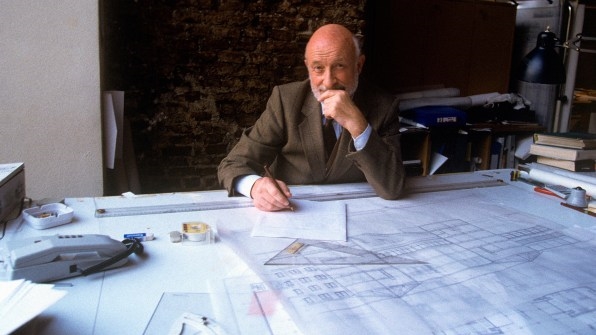
[Photo: Alberto Roveri/Mondadori/Getty Images]
Gregotti was also an editor of the Italian architectural magazine Casabella and a critic. MIT Press called his writing and buildings “instrumental both in the revision of some of modernism’s foundational myths and in the spectacular rise of postmodernism during the late 1960s and 1970s.” Gregotti founded his own firm, Gregotti Associati International, in 1974. Gregotti, who was 92, died on March 15.
Kenzo Takada
The Japanese fashion designer known as Kenzo moved to Paris in 1964. He intended to stay for six months but ended up staying for 56 years, changing the face of fashion in the process. Kenzo opened his first store in 1970 and went on to establish his own design house. His ready-to-wear styles were splashed with bright colors, loud prints featuring florals, and jungle animals. They were reasonably priced and made statement-making accessible. In 1993, he sold his fashion house to LVMH, Louis Vuitton’s parent company, to focus on art.
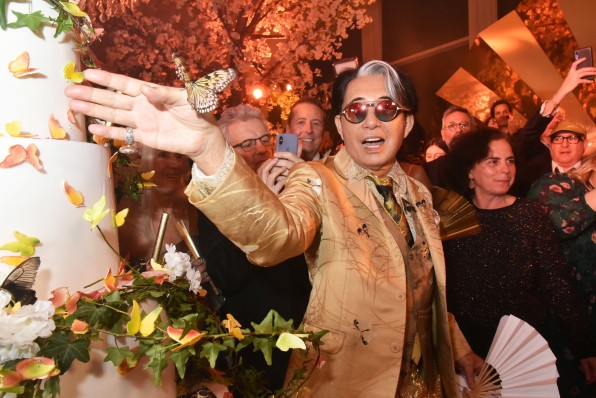
[Photo: Foc Kan/WireImage]
“Kenzo Takada has, from the 1970s, infused into fashion a tone of poetic lightness and sweet freedom which inspired many designers after him,” Bernard Arnault, chairman and chief executive of LVMH, told the Associated Press. To mark his passing at age 81, the fashion house posted: “For half a century, Mr. Takada has been an emblematic personality in the fashion industry—always infusing creativity and color into the world.”
Sergio Rossi
The iconic Italian shoe designer made tasteful, stylish, and beautifully crafted women’s shoes that have stood the test of time. Iconic designs such as the sexy, strappy Opanca shoe were graceful precursors to the minimalist heels that took over the ’90s, while the Godiva pump, a simple and feminine stiletto heel, is a now-ubiquitous style. In addition to his own label, founded in 1968, Rossi designed shoes for other titans in the industry, including Azzedine Alaïa, Dolce & Gabbana, and Versace. “He was an artisan and a genius, his shoes were feminine and made in the highest quality but wearable at the same time,” said Santo Versace, who recalled Rossi’s longtime collaboration with his brother Gianni.

” He loved women and was able to capture a woman’s femininity in a unique way, creating the perfect extension of a woman’s leg through his shoes,” said Riccardo Sciutto, CEO of Sergio Rossi Group. A Rossi shoe wasn’t just an accessory; it was an expression of the self. The designer died in Cesena, Italy, on April 3 at age 84.
Jun Maeda
Maeda was a resident set designer at the renowned La MaMa Experimental Theatre Club in New York, becoming “a treasure and one of the pioneers of experimental theater,” according to La MaMa artistic director Mia Yoo.
We are so sad to learn of the passing of Jun Maeda. He will be very missed by the La MaMa family. Rest In Peace. pic.twitter.com/y69MnpBKES
— La MaMa E.T.C. (@LaMaMaETC) April 6, 2020
Maeda arrived in the U.S. with Japanese experimental theater companies Tokyo Kid Brothers and Shuji Terayama in 1970 and was almost immediately sought after as a set designer. He was well known in the off-Broadway world, according to Deadline, and worked with theater greats such as directors Andrei Serban, Peter Brook, and Joseph Chaikin. Maeda won the 1981 Obie Award for Sustained Excellence in Set Design. “His impact on La MaMa and theater has deeply influenced and touched generations of artists,” read a remembrance by the La Mama Theatre club. “We will miss him terribly.” Maeda died on April 6 of COVID-19 in New York.
Philippe Cassegran
Cassegran was president of the French accessories brand Longchamp and served the family-run company for over 60 years. His most iconic work is likely the Le Pliage bag that he designed in 1993. Longchamp described the oversized nylon bag with leather closure flap as “the quintessence of his design philosophy: simplicity, relevance and elegance.” It also struck a chord with consumers: The bag became the company’s best-selling style and has sold 30 million units to date, according to Women’s Wear Daily.

The introduction of the Le Pliage bag was one of many ways that Cassegran changed the company. He expanded Longchamp to international audiences in the 1950s and supported his father in a variety of roles, from manufacturing to marketing. Cassegran died on November 30 of COVID-19 complications at age 83.
Jenny Polanco
The trailblazing Dominican fashion designer had a career that spanned nearly four decades. Through it all, she maintained an “ethical brand with a strong national identity” that recalled her native Dominican Republic. Polanco was known for her ability to combine clean lines and drapey silhouettes with details such as amber, horn, pearl, and coral, according to her company’s website. She frequently showed at Miami Design Week.

[Photo: Johnny Louis/WireImage/Getty Images]
“You danced to your rhythm and you filled us with pride with every goal you achieved and we will see to it that your name continues to do so,” the company wrote in a tribute on Instagram. Polanco died from COVID-19 complications on March 24. She was 62.
John Paul Eberhard
John Paul Eberhard founded the University of Buffalo’s architecture school in 1968. He profoundly shaped the school’s design perspective with his adherence to general systems theory and offered a macro vision of architecture as part of a social system, which required architects to work with engineers and politicians, according to the Architect’s Newspaper.
Eberhard continued to blend disciplines throughout his career while serving at a range of academic institutions and foundations. He left the University of Buffalo in 1972 and went to the American Institute of Architects Research Corp. before taking over the Building Research Board at the National Academy of Sciences, Engineering and Medicine with a special interest in sustainable design and urban planning. He joined Carnegie Mellon in 1988 and was the founding president of the Academy of Neuroscience for Architecture in 2003. Eberhard died on May 2 at the age of 93 due to COVID-19 complications and congestive heart failure, less than a month after the death of his wife.
Rifat Chadirji
The architect, critic, photographer, and thinker shaped the physical landscape in Iraq and offered a new way of thinking about architecture in the region. He melded traditional Iraqi heritage with contemporary forms in a style he called “international regionalism.” He was the architect behind 100 buildings in the country and became a “pivotal cultural figure” during Baghdad’s postwar modernization. He advanced the construction of factories, colleges, and more, according to the Columbia University Graduate School of Architecture, Planning and Preservation.

[Photo: AFP/Getty Images]
Nasser Rabbat, the director of the Aga Khan Program for Islamic Architecture at MIT, described Chadirji as “one of the most influential shapers of modern Baghdad and an original theorist of architecture with a broad historical and cultural breadth.” Charirji died in London on April 10 from COVID-19 complications. He was 93.
Michael McKinnell
The renowned Manchester, U.K.-born architect was perhaps best known for the controversial Brutalist-styled Boston City Hall, which he codesigned with Gerhard Kallman. McKinnell launched his own firm, Kallmann McKinnell & Knowles, with Kallmann and Edward Knowles, after securing the massive project in 1962. It was his first building, and the Le Corbusier-inspired structure would become a monument in the Boston landscape for decades to come. He was 26 years old at the time.
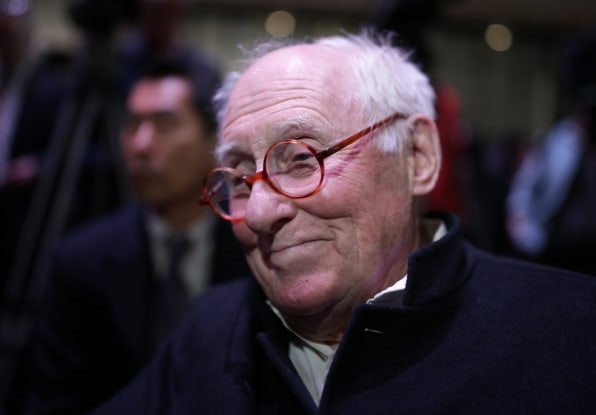
[Photo: Jonathan Wiggs/The Boston Globe/Getty Images]
The firm went on to design major buildings across Boston, including the Hynes Convention Center, the Cambridge branch of the American Academy of Arts and Sciences, and Harvard Law School’s Hauser Hall. In addition to his practice, McKinnell taught at Harvard Graduate School of Design and MIT’s School of Architecture and Planning; he was also a painter. McKinnell died on March 27 due to COVID-19 complications. He was 84.
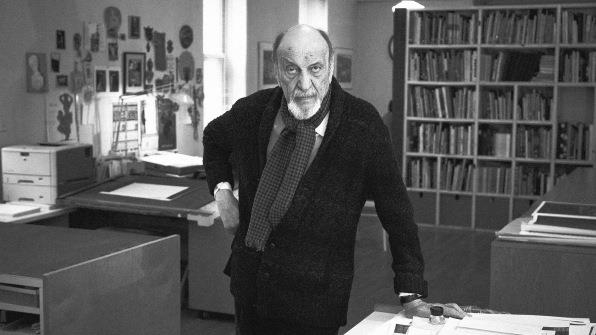
Milton Glaser
The contributions of this legendary graphic designer are so extensive they’re truly hard to capture. Glaser introduced a shift to a more eclectic and illustrative design approach, reminiscent of Art Nouveau, with decorative typefaces more closely associated with counterculture psychedelia, according to Steven Heller in The Moderns. Glaser founded Push Pin Studios with fellow designers Seymour Chwast and Edward Sorel in 1954 and was a cofounder of New York magazine. He was also the designer behind some of today’s most iconic logos, including I :heart: NY (see seven of his greatest works here). Glaser died June 26 at age 91. While his death wasn’t due to COVID-related complications, his passing was another huge loss in a devastating year.
(65)

